I’ve written before about the liminal Gods of the Fairy Witchcraft I practice, including the seasonal pairings of the Lady of the Greenwood and Lord of the Wildwood and Queen of the Wind and Hunter as well as the sisters Thallae and Thessilae, the Lord of Mischief, and the Queen of Apples; in my books I’ve also touched on several others relating to the ocean and storms. The thing about these…
Book Review: Lugh Lleu A Collection of Poems and Tales
I haven’t done a book review in a little bit so let’s jump into one today for Kris Hughes ‘Lugh Lleu A Collection of Poems and Tales’ published in 2020. This is a short book and features 5 poems and 4 stories as well as an introduction. The introduction lays out the author’s intent with the book which is to explore the areas of crossover between the Irish deity Lugh and the Welsh god Lleu…
7 Facts Everyone Should Know About Fairies
The subject of fairies is a complex one and with the amount of good, bad, and ridiculous material floating around online there’s a lot of confusion. Here are seven basic things about the subject that everyone should know:
The Word Fairy Is A Catchall Term – Although we use fairy as if it were specific the word is and has always been a generic term applied to a range of beings. Its history goes…
Keeping the Word Fae Meaningful
I’m about to say something very unpopular here. The current trend to refer to absolutely anything cute, odd, unusual, or beautiful as ‘fae’ is actively encouraging the disenchantment and disempowerment of the concept of fairies and the Otherworld. It also often leans into ableism, objectification, and exoticismNot a fairy but a deer at the Seneca Army Depot in New York. Photo © blmiers2 / Flickr…
Complete List of My Published Work
I am occasionally asked about this so I thought it would be easiest to simply post a list here of all of my published and forthcoming work.
Articles
“Healing
Ritual for the Ocean Waters”, Circle Magazine issue 109 summer 2011
“A
Gaelic View of Samhain”, Celtic Guide, vol. 1 issue 10 Oct. 2012 “Celebrating Imbolc with the Family”, Air n-Aithesc, vol.1 issue 1, Feb.
2014
“The Witch, the Bean…
Thorns – a poem about fairies
My yard is all over thorns,raspberry, rose, hawthorn,sweet white flowers in springbright red berries in autumnbut spring or autumn,full green or bare brown,the thorns remain constant.Don’t be fooled by thefair flowers, soft petalled, or the round, ripe berriesjuicy and tart on the lips;these are temptationsluring the unwary and the bold.One misstep, one stumbleone hand grasping too faror too…
Hilda: Blending Folklore and Fiction
One of my seven year old son’s favorite shows is Hilda on Netflix, so its safe to say I’ve seen all the episodes of both seasons repeatedly. Its a fun show with a great premise and lively characters. Based on a comic the animated show follows the adventures of the eponymous heroine, a young girl raised in the wilderness who moves to the city of Trolberg, and tangentially her friends. The show…
FLED BRICRENN The Feast of Bricriu
I seem to have underestimated the number of little green books that I have so here are two more wonderful additions. As usual I will not be reviewing them in depth but I will talk about structure and the most interesting parts in them.
As you must have read from the title of the post the books I will be taking about today are related to the Feast of Bricriu. And there are two books for this post: Fled Bricrend (The Feast of Bricriu) and Fled Bricrenn: Reassessments.
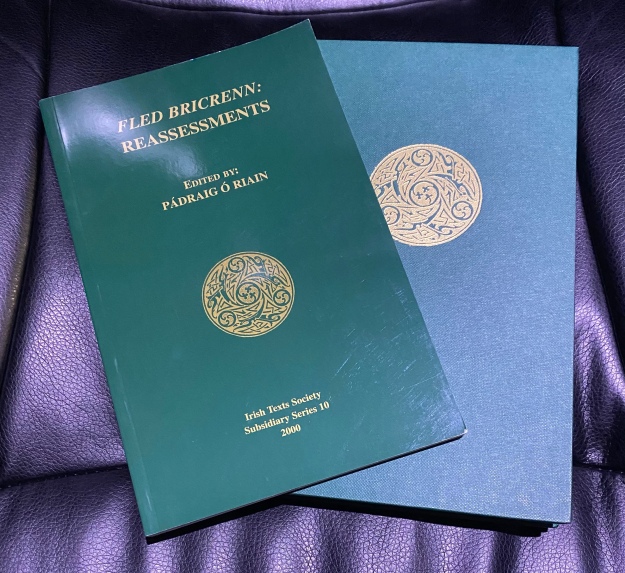
2020 In Review
This year has been a chaotic one for many people, myself included. Last year I had debated archiving this blog but ultimately decided not to, however I definitely didn’t get much content up here, about on par with 2019 which was also a skimpy year for content. I’d like to think what did make it to the digital page was decent quality but obviously going from an average of 60 posts down to a bit…
Buile Suibhne
This review is not going to be about content but about what is available on this story in the Irish Text Society. I said a while back that I had finished all my Little Green Books but apparently I didn’t.
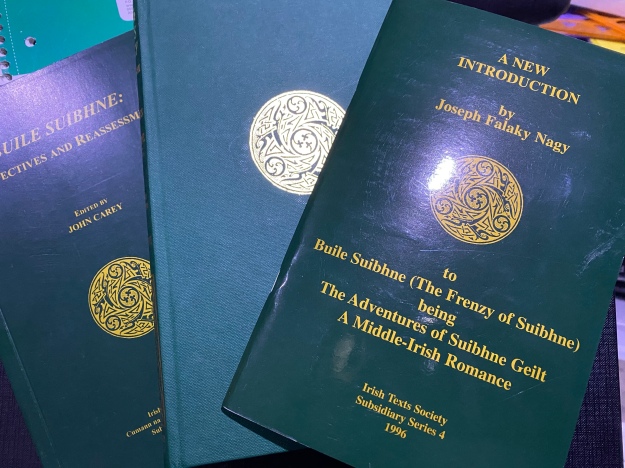
Book One: A New Introduction by Joseph Falaky Nagy.
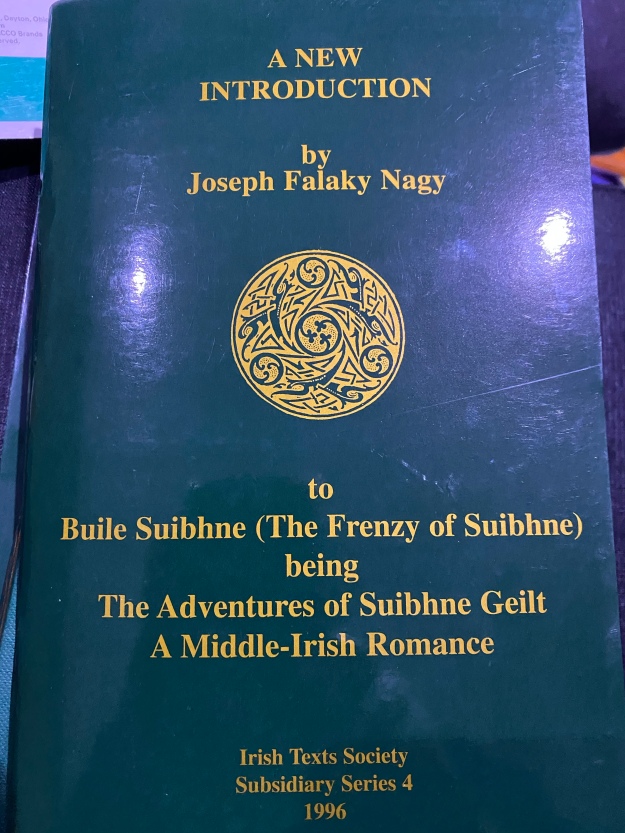
I read this Introduction two times, once before reading the main book and once after reading the main book. The first time I will admit that I didn’t really understand everything in the Introduction but after reading the main book it became very clear. Just a heads up if you have this book no need to read the first 32 pages of the main book as they are the same.
Main Book: Buile Suibne
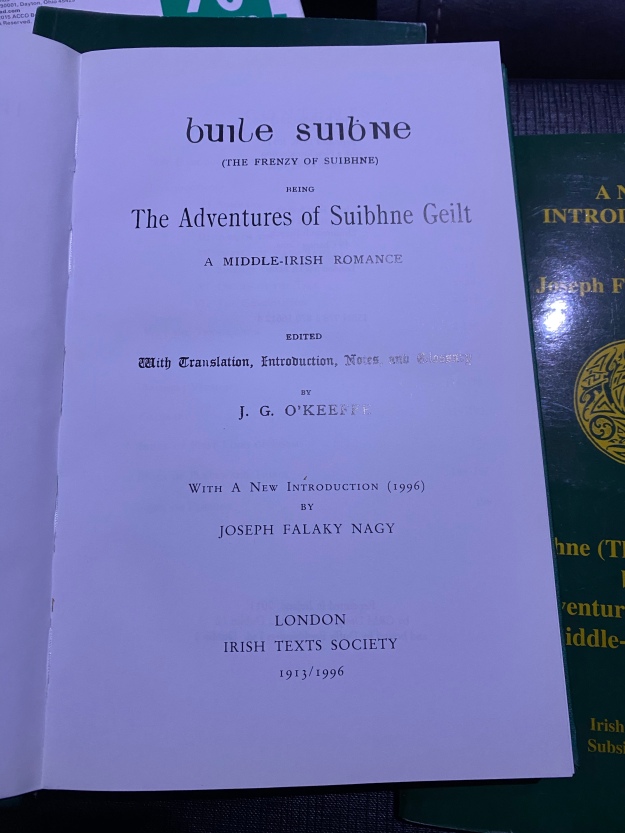
This is the 1996 edition which has the same Introduction as the book above on top of the 1913 Introduction to the text. The Introduction, translation notes, and glossary of the original were all done by J. G. Keefe.
The original Introduction begins after page 32 and has a summary of the story, the manuscripts used, the dates of the manuscripts, a summary of the Battle of Magh Rath. Suibhne Geilt, the origins of the tale, and finally the composition of the tale.
The first chapter is the tale itself with the left side being the Irish and the right side being the English translation. The tale and translation end on page 159 (Not including the 32 pages of the Nagy Introduction). The notes start on page 161 and end on page 173. There is also a glossary that starts on page 179. The Index starts on page 193.
Book Three: Buile Suibhne – Perspectives and Reassessments
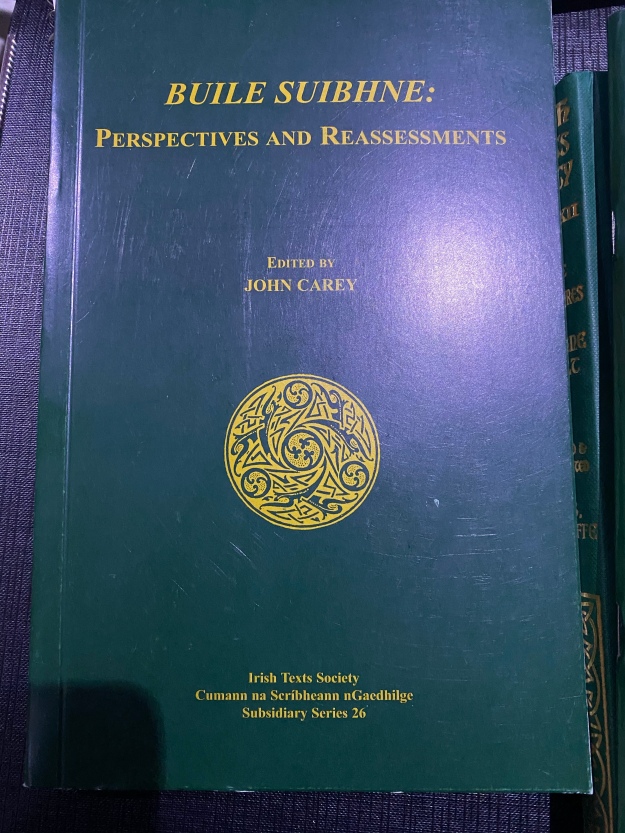
This is the text that I found most interesting. The 6 essays included in the volume all have interesting hypotheses and re-appraisals of scholarship related to the text.
The essays are:
- The Cult of St. Moling and the Making of Buile Shuibne by Máirín Ní Dhonnchadha.
- The “Death of the Wild-Man” in the Legend of Suibhne Geilt by Brian Frykenberg
- The Authorship and Transmission of Buile Shuibne a Re-Appraisal by Alexandra Bergholm
- James George O’Keeffe 1865-1937 by Pádraigín Riggs
- At Swim-Two-Birds: Sweeny and Many Others by Breandán Ó Conaire
- A Study of the Irish Legend of the Wild Man by Pádraig Ó Riain
My favorite ones are the first and the last essays. They have good analysis and interesting hypotheses.
The three books read together or if you have the 1996 or 2011 versions of the main book then just the main book and the assessments, are a great edition to the library of any Irish Literature buff and anyone who wants to understand the tale of the Frenzy of Suibhne.